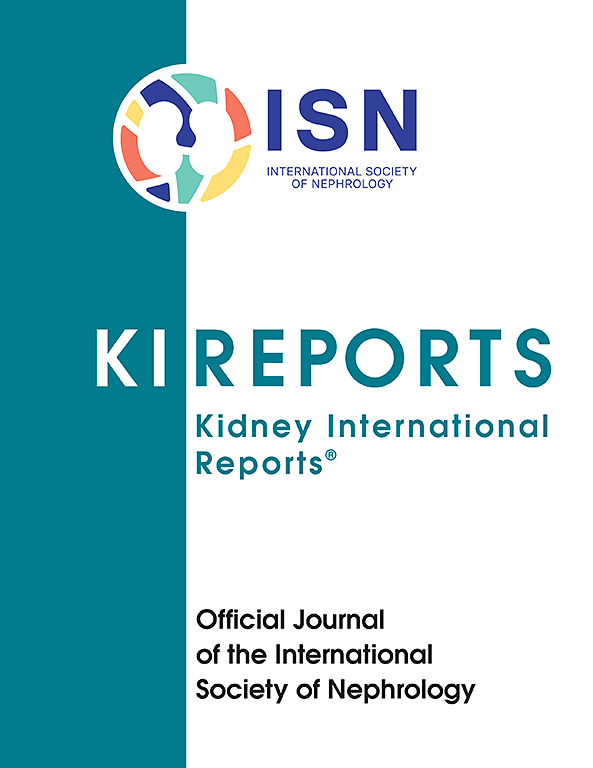早期测定他克莫司浓度-剂量比可识别肾移植中同种异体移植物损失的风险
IF 5.7
2区 医学
Q1 UROLOGY & NEPHROLOGY
引用次数: 0
摘要
他克莫司快速代谢肾移植受者(KTRs)(即他克莫司谷水平/总日剂量[C0/D <;1.05])移植物功能较差;然而,在现实生活中识别他们是具有挑战性的。我们研究了移植后最初几个月他克莫司代谢状态的可重复性及其与长期同种异体移植结果的关系。方法纳入2000年至2019年期间在我中心接受同种异体移植1个月并接受他克莫司治疗的所有ktr患者。根据使用C0/D <的时间对他克莫司快速或慢速代谢物进行分类;1.05(比;75% =高,<;25% =低)在移植后各时间点。我们首先通过调查头几个月的C0/D变异性来确定患者分类的最早准确时间。其次,研究同种异体移植结果的多因素原因特异性Cox模型在移植后最早准确时间点确定其状态的组中进行。结果纳入分析的1979例患者中,2个月是判定高患者的最早准确时间点(85%的高患者在2个月时判定为长期高,Brier评分= 0.06)。多因素分析显示,在调整混杂因素后,2个月时确定的高患者(n = 499)的同种异体移植损失风险(病因特异性风险比[CS-HR] = 2.00, 95%可信区间[CI] = 1.48-2.69)和同种异体移植排斥反应风险(CS-HR = 1.71, 95% CI = 1.15-2.54)显著高于低患者。此外,在3年时,High患者的同种异体移植物功能较低(46.7 vs. 52.9 ml/min, P <;0.0001), 1年后出现慢性血管病变的比例更高。结论c0 /D是一种简单实用的工具,能够在移植后第2个月就识别出有排斥反应和同种异体移植失败风险的患者。本文章由计算机程序翻译,如有差异,请以英文原文为准。

Early Determination of Tacrolimus Concentration–Dose Ratio Identifies Risk of Allograft Loss in Kidney Transplantation
Introduction
Fast tacrolimus–metabolizing kidney transplant recipients (KTRs) (i.e., tacrolimus trough-level/total daily dose [C0/D < 1.05]) have poorer allograft function; however, their identification in a real-life setting is challenging. We investigated the reproducibility of tacrolimus metabolic status during the first months after transplantation and its association with long-term allograft outcomes.
Methods
All KTRs between 2000 and 2019 with a functional allograft at 1 month and receiving tacrolimus in our center were included. Fast or slow tacrolimus metabolizers were classified according to the time spent with a C0/D < 1.05 (> 75% = High, < 25% = Low) at various time points posttransplantation. We first determined the earliest accurate time for patient categorization by investigating C0/D variability during the first months. Second, a multivariate cause-specific Cox model studying allograft outcomes was performed in groups identified by their status determined from the earliest accurate timepoint after transplantation.
Results
Among 1979 patients included in the analysis, 2 months was the earliest accurate timepoint to determine High patients (85% of High patients identified at 2 months remained High long-term, Brier score = 0.06). Multivariate analysis revealed that High patients determined at 2 months (n = 499) had a significantly higher risk of allograft loss (cause-specific hazard ratio [CS-HR] = 2.00, 95% confidence interval [CI] = 1.48–2.69) and allograft rejection (CS-HR = 1.71, 95% CI = 1.15–2.54) than Low patients after adjustment for confounding factors. Moreover, allograft function was lower in High patients (46.7 vs. 52.9 ml/min, at 3 years, P < 0.0001) with a higher proportion of chronic vascular lesions at 1 year.
Conclusion
C0/D is a simple and pragmatic tool capable of identifying patients at risk of rejection and allograft failure as early as the second month posttransplantation.
求助全文
通过发布文献求助,成功后即可免费获取论文全文。
去求助
来源期刊

Kidney International Reports
Medicine-Nephrology
CiteScore
7.70
自引率
3.30%
发文量
1578
审稿时长
8 weeks
期刊介绍:
Kidney International Reports, an official journal of the International Society of Nephrology, is a peer-reviewed, open access journal devoted to the publication of leading research and developments related to kidney disease. With the primary aim of contributing to improved care of patients with kidney disease, the journal will publish original clinical and select translational articles and educational content related to the pathogenesis, evaluation and management of acute and chronic kidney disease, end stage renal disease (including transplantation), acid-base, fluid and electrolyte disturbances and hypertension. Of particular interest are submissions related to clinical trials, epidemiology, systematic reviews (including meta-analyses) and outcomes research. The journal will also provide a platform for wider dissemination of national and regional guidelines as well as consensus meeting reports.
 求助内容:
求助内容: 应助结果提醒方式:
应助结果提醒方式:


